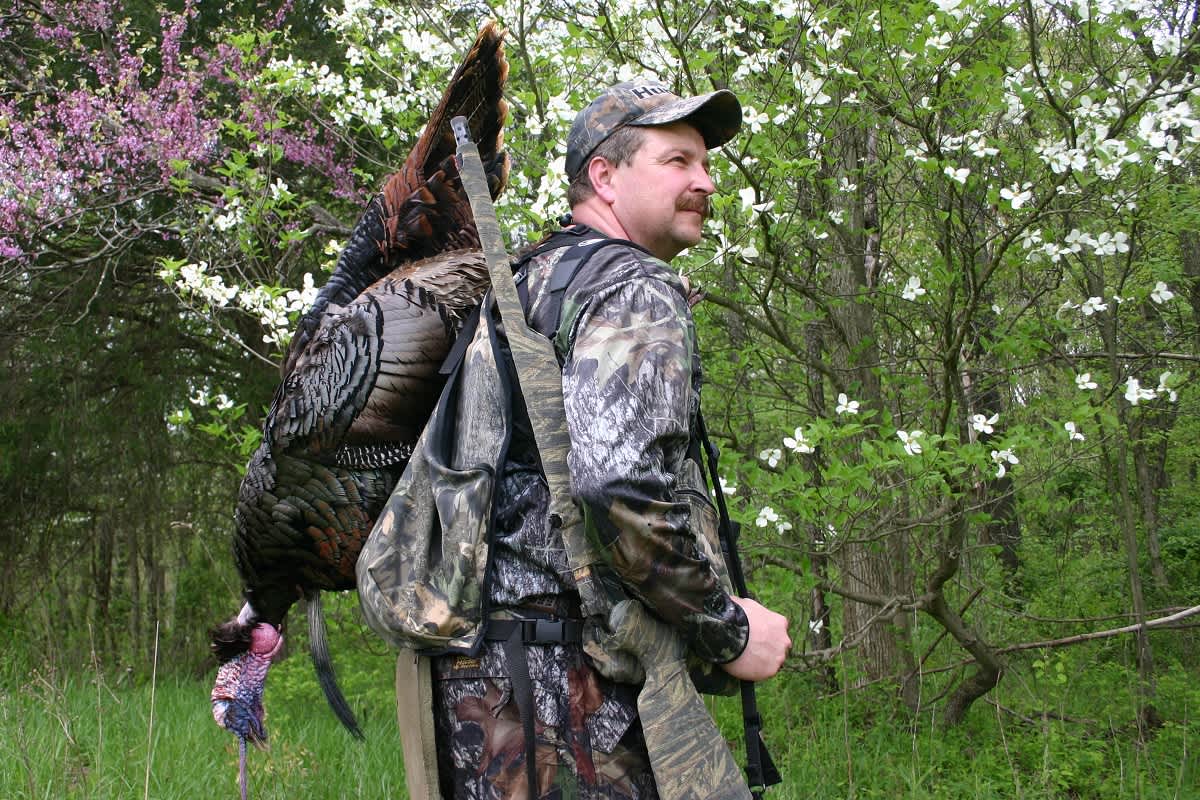The Best Public Lands for Southern Turkey Hunting
Bill Miller 03.17.15

Are you looking for a tough turkey hunting challenge to undertake this spring? Try this! Pick out a public hunting area in one of the Southern states, go in blind, and attempt to shoot yourself a longbeard Eastern turkey! If you find success on an even half-consistent basis, and you’ve undoubtedly earned the right to call yourself a turkey hunter!
To up the odds of success, pick out a public area known for producing turkeys. Here are some recommendations (and a couple of warnings) from across the South.
Alabama
Even when turkeys didn’t exist in much of the United States, they were holding on and hunted in Alabama. So that means these birds are especially experienced and hunter-wary. However, Alabama has an extraordinary Wildlife Management Area (WMA) system and turkeys can be found on these lands in every part of the state. Try the 57,000-acre Choccolocco WMA near Heflin, or the 28,000-acre Barbour Wildlife Management Area near Clayton.
Arkansas
By the numbers, don’t go to Arkansas these days to shoot a turkey. The season has been reduced to among the shortest anywhere and they don’t open until the latter half of April, which is extremely late for the South. Many areas are by permit only. However, if you’re out to get your US Super Slam and want to get it done on public land this spring, try the WMAs in the Ozark National Forest. Though they are far more famous for the flooded timber duck hunting, there is some turkey hunting available in the Cache River and White River National Wildlife Refuges. Be sure to cross-reference both the state and refuge-specific regulations.
Georgia
The Chattahoochee National Forest is ground zero for public-land turkey hunting in Georgia. All told, there’s more than a million acres of great public hunting ground. For a unique turkey hunting experience, try the 16,000-acre WMA surrounding the Mountain Campus of Berry College in the northwestern part of the state. The 25,000-acre Dawson Forest WMA is in proximity to metro-Atlanta, which can mean it gets hunted hard, but with rivers and streams winding through the tract, a canoeing or kayaking hunter should be able to find a way to get away from the crowds.
Kentucky
Were I to pick a “Southern” state to go hunt a Eastern turkey toward my public-land slam, Kentucky would probably be it! In fact it has been my pick. The 700,000-plus acres of the Daniel Boone National Forest in eastern Kentucky are a huge draw with good reason. It’s so big that hunting pressure is scattered and you can almost always find a place to hunt run-and-gun solo—which is tough to do on most public lands these days. You’ll also find cooperative turkeys in the southeast region on areas like Red Bird WMA.
Louisiana
Most of Louisiana’s public hunting lands are geared more toward waterfowl and deer hunting and don’t include a lot of great turkey habitat. The state has ongoing efforts to expand the availability of turkey hunting on both public and private ground, but the payoff is still at least a few seasons away. If you’re bound and determined to try public-land turkey hunting in Louisiana, consider the 13,000-acre Grassy Lake WMA in northeast Avoyelles Parish or the Jackson Bienville WMA in the north-central zone.
Mississippi
WMAs across Mississippi offer some of the best public-land hunting for Eastern turkeys to be found anywhere! Residents recognize the Calhoun County, Chickasaw, and Upper Sardis areas in the northeast region and Caney Creek, Bienville, and Tallahala WMAs in the central zone as some of the best. Be sure to check the specific WMA regulations regarding seasons and permit-only hunting, as there is some variation from the general state regulations. Also, note that you’ll need a WMA-use permit in addition to your regular license.
North Carolina
North Carolina is welcoming to the wandering turkey hunter with some 2.1 million acres of public land. Two National Forests—the Pisgah and the Nantahala—offer more than a million acres of run-and-gun turkey hunting opportunity alone. If you’re willing to stretch your legs, you should be able to work a gobbling bird or two any day of the long season. The Pisgah is in the western third of the state, and the Nantahala is out in the western tip. For North Carolina’s best public land turkey hunting, “Go west young hunter. Go west.”
South Carolina
Despite South Carolina’s relatively small size it’s the big-acreage public areas that get the most turkey hunting attention there. The Francis Marion National Forest is a 250,000-acre tract north of Charleston and is second in size to the 370,000-acre Sumter National Forest in the western Piedmont region. A possible sleeper locale is the 26,000-acre Woodbury WMA. Turkey hunters adventurous enough to approach by watercraft on the Big Pee Dee or Little Pee Dee Rivers should have no trouble finding unworked birds—or at least underworked—birds all to themselves at the Woodbury.
Tennessee
Tennessee is a “go-to” state for nonresident and resident hunters alike when it comes to bagging an Eastern tom on public land. The Volunteer State has lots of public ground, lots of turkeys, and a multiple-bird limit as long as you bag them on separate days. The Cherokee National Forest is enormous, encompassing 650,000 acres in 10 counties. It’s a mountain hunt over near the North Carolina state line, so be in good shape. There’s also the 170,000 acres of the Land Between the Lakes National Recreational Area in northern Tennessee and western Kentucky.

